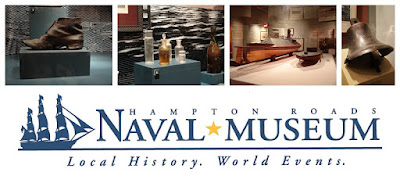Aircraft carriers are often thought of as the most powerful type
of vessel in the Navy’s arsenal, yet they have long been among the most vulnerable. Standoff missiles and submarine torpedoes have
been a cause of concern for many decades, but new long-range precision strike weapons
such as hypersonic glide vehicles fielded by America’s adversaries are a significant cause for concern. Their potential for anti-access/area denial erodes the matchless advantage
of flexible presence that an aircraft carrier affords within what is widely known
as the “global commons.”
Despite the proliferation of technically advanced weapons that experts believe portend frightening scenarios for, among other precious strategic assets, our carrier strike groups, the greatest threat carrier Sailors face today is the same type of threat they faced 50 years ago this week aboard the carrier USS Enterprise (CVAN 65): Accidents. As it was then, and as it is today, it doesn’t take much to bring a carrier’s combat operations to a catastrophic halt. At approximately 8:19 am on the morning of January 14, 1969, during training operations southwest of Pearl Harbor, Hawaii, the 15-pound warhead of an unguided Zuni rocket nestled in a pod under the wing of a F-4 Phantom fighter detonated after it was exposed to hot exhaust gasses emanating from a gas turbine starter unit mounted at the rear of a flight deck tractor.
As happened during a similar fire aboard USS Forrestal (CVA 59) during combat operations off Vietnam in July 1967, also touched off by a Zuni rocket, the explosion spread burning aviation fuel across the flight deck, causing more ordnance to detonate. Three more Zuni rocket warhaads detonated in the first few minutes, followed by multiple Mk 82 500-pound bombs, variants of which are still deployed aboard carriers today, including three on the same wing pylon that detonated all at once, were powerful enough to breach Enterprise’s armored flight deck, spreading the burning fuel, and the devastation, to decks below as well as the carrier’s cavernous hangar bay.
The conflagration was brought under control within 45 minutes and was completely out roughly four hours later, but 27 Sailors died and 314 were injured. Fifteen aircraft were also destroyed. As a result of the accident, Enterprise had to undergo 51 days of repairs at a cost of over $125 million. Even so, the quick thinking of the carrier's captain and crew as well of those of accompanying vessels limited the damage, and Enterprise was still able to complete its next regularly scheduled deployment off Vietnam, one of six it would successfully complete during the Vietnam War.
Enterprise was officially deactivated in December 2012, decommissioned and stricken from the Naval Vessel Registry in 2017, its defueling was completed the following year, and the deactiviation process was completed in April 2018. Those sharp-eyed enough can catch a glimpse of its superstructure heading south through Newport News on I-664 near the southern end of the massive shipyard where it was built, Newport News Shipbuilding.
Sometime within the next decade a new Enterprise (CVN 80) will leave the same shipyard for another half-century or more of service. Although the new ship will feature new damage control capabilities that will mitigate risks to the crew in the event of an accident, no technological innovation can eliminate them. For the untold thousands of Sailors who will serve aboard it, many of whom haven’t even been born yet, the same vigilance, bravery, and capacity for self-sacrifice will doubtless be required of them as for those who served aboard every ship before it that bore the name Enterprise.











My dad was an E-2 crewman on board when they happened.
ReplyDeleteMy Father-in-Law was an Aviation something on board. Only by the Grace of God was he not on the deck.
ReplyDelete